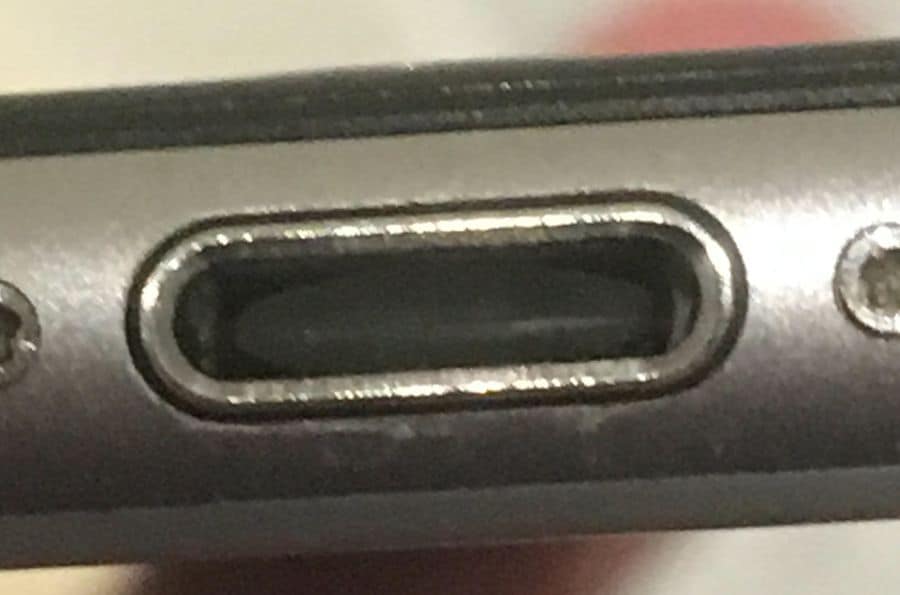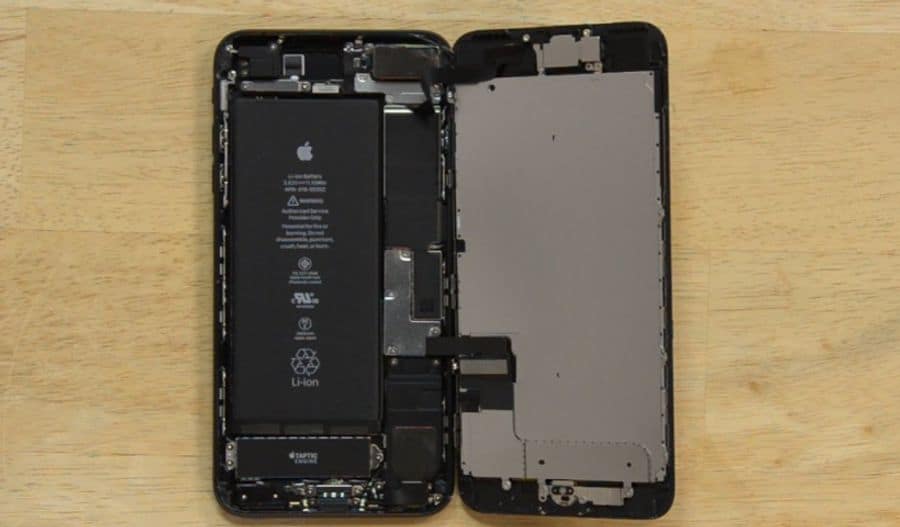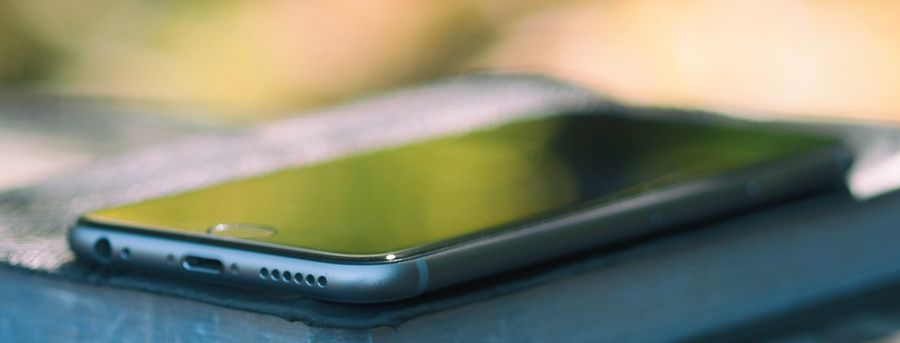How To Charge Iphone When Charger Port Is Broken

iPhone charging issues are common in even newly purchased phones. But, believe it or not, most of these occurrences do not necessarily need to be a substantial hardware issue; many charger port issues come from day-to-day activities, (although some complex hardware issues may lead to port damage). Other port issues stem from the iPhone's basic design and functional characteristics.
What are common problems with the iPhone charger port? 5 Common iPhone charger port issues include:
- Corrosion of the metal port
- Dust, dirt, and debris
- Broken charger port
- Bent metal connector
- Loose or slag charger port
The most noticeable iPhone port problem is a bent metal connector; this may reduce the efficiency of charging, and thus, prolong the charging period. Other ports have unstable or unsupported connections or difficulties in detecting the charger. The remainder of this article discusses what charger ports are, characteristics of good charger ports, and common charger port issues and their solutions.
What is a Charger Port?
Important Note Before Reading Further: As you read each common issue of the iPhone charging port below, you'll notice that many issues result from physical forces of pulling, pushing, and bending charging cables into the port. To avoid further damage down the road (and potential substantive repair costs) I highly recommend using a wireless Qi-certified charging pad or stand, like this one that I personally use, so that the number of times a cable is crammed into your iPhone's charge port is significantly reduced, and extending the lifespan of your device.
A charging port is the iPhone's connective entry for most inter-related connections and the means for charging it. The structural component is a metallic configuration. It aids as the connector between attached devices, like a Mac, and a power source like a charger.
The features of a typical charger port are:
- The stripes of metals arranged for a specific connection
- The power detecting chip
- Power regulator
A charger port is named so because of its primary function. It can also perform some other activities like data usage: through the connection of a data cable, the port can be an assessing gauge to mobile phone data. Also, the port can act as a medium for file transfer from either personal or public computers.
Defining Charging Port Issues
Functional problems with an iPhone cannot be limited to a specific or single source, therefore not all power problems you may be experiencing can be boiled down to a charging or charger port issue. So, first, you need to understand what a standard charger port issue looks like.
The problems that stem from charging ports come majorly through a "disconnection." In a typical connection, there is a source and a receiver. The source produces the charge: an example is a charger and an iPhone. The receiver procures the link through an opening called the port—in this case, the charger port.
So, when the source cannot connect to the receiver, and the fault comes from the charger port, it is termed a "charger port issue."
5 Common iPhone Charger Port Issues

Many things might lead to the problems an iPhone experiences, which can stem from the charger port. However, the truth is, some charger port issues are obvious, while others are hidden until a series of tests can be carried out by a professional iPhone repair shop.
Charger port problems can range from internal hardware malfunctioning to careless user handling and day-to-day activities. The following are five of the most common iPhone charger port issues and causes:
1. Corrosion
Corrosion of the charger port is prevalent among iPhone users. Corrosion often occurs in the presence of water and air; that is, water and air are needed before a metallic object can undergo rusting.
When the corrosion process begins, it occurs around the metallic object and first weakens the exposed part. When the connection is weakened, the total amount of power supplied to the receiver will not reach the amount that can power a phone, or the current might be so low as not to emulate a fast charging process.
The process of corrosion takes a long period and occurs silently, so it is not easy to realize if an iPhone is going through the process of corrosion.
The iPhone charger port is known to be metallic in nature. With our day-to-day activities, it can be easy to get water into the port mistakenly from spills, or from sweat collected in our pockets as we work out. Some of the known causes of corrosion in an iPhone are:
- Collection of sweat, either in the pocket or during exercise.
- Careless handling of water or water products near the phone.
- Water collection during a visit to the beach, skiing, and other wet environments.
- Temporarily holding the phone in the mouth or with wet hands.
2. Dust, Dirt, and Debris
Dust is unavoidable; it makes an appearance daily through our everyday tasks, no matter if we are in the office in the car driving. Dust particles can be carried through the air; therefore, they are easily able to come in contact with our phone irrespective of the place it was kept.
Specks of dust, dirt, or debris are small particles that can penetrate the phone by entering its small ports, regardless of their origin. They can cause quite a lot of damage in an iPhone if they are found stuck in the charger port hole, specifically problems with connectivity.
However, dust, dirt, and debris do not immediately cause damage to the phone; once these particles begin to enter the charger port hole, they will need to gradually build up until they get to the point where the connection between the charger port and cord begin to fail. With that said, the process is not immediate; it may take days to even months before the effects of the particles turn up.
Some of our daily activities can accumulate dust, dirt, and debris that can enter an iPhone's charging port, such as:
- Working in environments that host dust, dirt, and debris often, such as construction sites, workshops, or factories
- Outdoor activities, such as sports or camping
- Working in the garage
- General house cleaning
3. Broken Charger Port

A broken port is one of the more complex iPhone charger port issues. A faulty port occurs primarily because of external forces; without an outward application, a charger port cannot be damaged.
A broken port is complex because it requires the service of professional engineers; they will open up the phone and replace the port. The port must be replaced so it can function well, unlike the other charger port problems, which can be managed by improvising—either by cleaning it or applying some tools.
The port can be damaged in two ways: either it disconnects from the root connections or the port physically breaks. This can occur by forced insertion during the process of putting the cord into the port and why it is necessary to handle the port carefully while inserting a charger or data cable.
Outward forces are required for this kind of damage; thus, most port breakages are caused by user error. Some of the causes of iPhone charger port breakage are:
- Roughly handling the charger port
- Using an incompatible power cord
- Using a bent data or power cord
- Inserting sharp objects into the charger ports
- Improper mode of using the port's cleaning devices
4. Bent Metallic-Connector
A bent charger port metal stripe is a common reason for an iPhone charger port to experience problems. There is a tendency for the metal in the port to bend easily each time a charger or data cord is inserted. The port works by the attachment of the port metals to the motherboard. Each medium of insertion creates a means for detachment of the port from the motherboard.
So, irrespective of the time of purchasing the iPhone, when the attachment weakens, the phone will start to show signs of damage. An example is a slow charging process.
Some of the common causes of a bent connector are:
- The mode of insertion
- Frequently charging
- Rough handling
- Inserting objects and tools wrongly
- Using an oversized or incompatible charger cord
5. Loose or Slag Charger Port
A loose charger port has similar causes as a bent metal connector:
- Incorrect process of insertion
- Multiple charges continuously
- Careless handling
- Using objects wrongly
- Using an incompatible charger or data cord
The only difference between the two port issues is appearance. Unlike the bent metal connector, a slag charger port disconnects from the root, that is, from the motherboard. This causes a total disconnection between the source and the receiver.
A bent port might still work, but slow in action; a slag charger port might not work until it is repaired. Thus, a loose port demands the services of professionals, and the metallic port connector must be replaced.
Although a loose port might not work, if the charger is bent to a specific degree or location, it is possible to secure a good connection. This is another reason it is different from a bent metal connector issue.
Can an iPhone Charger Port be Fixed?
Yes! An iPhone charger port can be fixed, with or without stress. An iPhone charger port is just like other devices that are opened and can accommodate any form of direct entering. If the problem originates due to some environmental factors like stone blockage, dirt, sand, debris, and more, it requires a direct and straightforward procedure for repair.
On the other hand, complex hardware operations are required if the charger port malfunction is a result of a damaged or broken port and the like.
Solutions to iPhone Charger Port Issues

The way an iPhone charger port issue can be resolved is broadly divided into two categories with multiple approaches. The first category is the "Do It Yourself" (DIY) method. Not all iPhone charger port issues are complex; some occur because of everyday matters and can be resolved using some basic tools and techniques.
On the other hand, some issues like port damage, breakage, overheating, and others require the attention of qualified engineers. At this point, those with Apple Care+ have the upper hand and can get the charger port repaired for free or with small expenses.
The first thing you should do is understand the nature of the issue, to determine whether your phone needs an expert's attention or if it is something you can resolve on your own. How do you deduce if a charger port problem is a DIY-fix issue or a more complicated one?
The first step is to check for:
- Debris and dirt
- Corrosion
- Bent charger port
- Slag charger port
- Broken metal stripes
- Other noticeable changes
Once you've identified the type of charger port problem you have, depending on the nature of the issue, the correct solution can then be applied.
DIY Fixes
The most common issue of an iPhone charger port malfunctioning comes from daily wear and activities. Thus, most of it does not require a lot of professional intervention unless it is a complex issue. It can be as simple as cleaning your charger port.
Cleaning Your iPhone Charger Port
The essential tools for cleaning iPhone ports are either metallic or non-metallic materials. It is usually advisable and better to use a non-metallic material to prevent damaging the port.
- Metallic tools tend to leave some scratches and may expose the port surfaces, which, in turn, increases the risk of bending or some other complex issue later on. A good example of a metal tool is the iPhone sim key.
- The best tool for cleaning an iPhone charger port is non-metallic material; an example is a thin toothpick. A toothpick has less effect on the metallic body of the charger port. Even if it breaks, it is easy to remove, although it may cause damage as a result.
Either way you go, getting a thin metallic object or a toothpick ready is the first step in the cleaning of an iPhone charger port.
How to Clean an iPhone Charger Port
- Turn off the iPhone: This is to be on the safe side. The port is a power-controlling center; if it is mismanaged, the whole phone could become damaged. Thus, it is mandatory first to turn off the iPhone!
- Check for gunk: Gunk is the main thing that can block the connections—thus, the reason for cleaning the iPhone. Debris and gunk are always stuck in ports, so it is necessary to look closely and examine the level of the gunk build up. It is also required to use a bright light to see into the port.
- Clean with care and caution: While cleaning the iPhone port, it might seem simple to poke and prod the inside of your phone; however, it is necessary to be very careful because a lot of damage can be done at that moment of action. There may be a large amount of dirt or gunk; keep cleaning gently until the contact end is visible, that is, until the metallic inner end of the port reflects the light ray.
- Clean the whole iPhone: The entire iPhone may be covered in debris because of the dirt, so make sure you clean the whole phone properly to clear the area from other particles that may reenter the charger port hole again.
Check a Phone Repair Specialist Office
It is okay you are unable to clean out the port or are concerned you may cause more damage by trying to clean it; you can just as easily visit the nearest Apple store for phone clean up and repair.
If the phone is beyond the simple DIY procedures, that is, it is more complicated; it is necessary to visit your local Apple store. Having an Apple Care+ package is another advantage; that way, the iPhone can be repaired in the store with little to no expenses.
In Summary
For a long-lasting iPhone charger port, and therefore phone, the best method to avoid complications is prevention. There are many charger port issues, but most—if not all—of them can be avoided.
Day-to-day activities can lead to dust and water or condensation buildup within the port, so it is recommended that you keep your iPhone in a safe, dry place at all times. For example, if you're working outdoors or near water, keep the phone in a dry pocket or a waterproof pouch. Leave your phone in places free of dust and debris.
Also, be careful with how you handle your phone. If you need to plug in the charger, do it gently and make sure that the charger has the right fit—do not force the plug in; this is more often the case when users purchase 3rd party chargers rather than those manufactured by Apple.
If you still experience charger problems, most iPhone charger port issues can be resolved using basic techniques, such as cleaning. However, it is vital to talk to a professional at a phone repair shop or Apple store to get it repaired if you are not able to clean out the charger port correctly.
If you are trying to save money, especially if you do not have AppleCare+, it is highly recommended to carry out the above DIY procedures first, as it might correctly solve the issues you see with your iPhone charger port.
And last, but not least, consider investing in a Qi-wireless charger. This can avoid lots of potential disasters to your iPhone's charge post, and pay for itself many many times over.
References:
https://discussions.apple.com/thread/5242204
https://www.makeuseof.com/tag/how-to-clean-iphone-charging-port
https://www.cnet.com/how-to/use-a-toothpick-to-clean-out-your-iphone
https://appletoolbox.com/iphone-not-charging-lightning-port-problems-fix
https://www.iphonetricks.org/how-to-self-repair-an-iphone-that-isnt-charging-anymore
How To Charge Iphone When Charger Port Is Broken
Source: https://gizbuyerguide.com/5-common-iphone-charger-port-issues/
Posted by: morganfacter.blogspot.com

0 Response to "How To Charge Iphone When Charger Port Is Broken"
Post a Comment